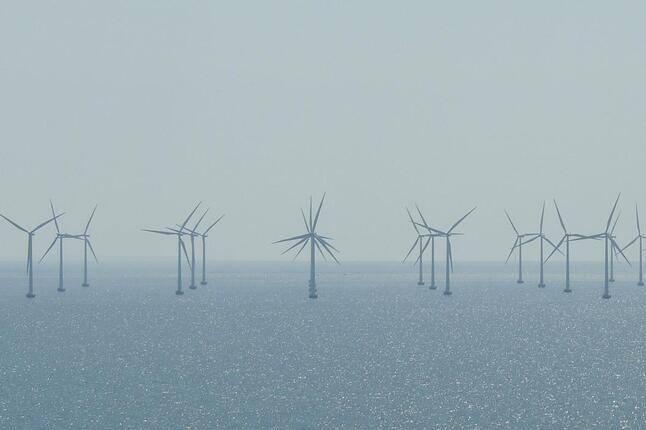Five SEAS teams receive Climate Change Solutions Fund awards
Five teams from the Harvard John A. Paulson School of Engineering and Applied Sciences (SEAS) have been awarded grants through the Climate Change Solutions Fund (CCSF) for projects aimed at advancing solutions to climate change and its wide-ranging impacts.
In total, 10 teams from across the University will share $1.3 million to support research into reducing the risks of climate change, hastening the transition to renewable energy, diminishing the impact of existing fossil fuels on the climate, understanding, and preparing for the effects of climate change, and propelling innovations needed to accelerate progress toward a healthier, more sustainable future.
“Full engagement in the critical work of confronting climate change requires that Harvard advance on as many fronts as we have at our disposal,” said Harvard President Larry Bacow. “The Climate Change Solutions Fund is one of the ways in which we support faculty and students in their important work, and the diversity of this year’s projects is a testament to the variety of tools we have at our disposal to address humanity’s greatest challenge.”
The fund was established in 2014 by President Emerita Drew Faust and is supported by the Office of the President and donations from alumni and others. CCSF is managed by the Office of the Vice Provost for Climate and Sustainability at Harvard.
Joanna Aizenberg, the Amy Smith Berylson Professor of Materials Science and Professor of Chemistry and Chemical Biology, is leading a project with Jonathan Grinham, Assistant Professor of Architecture, Harvard Graduate School of Design (GSD) and Harvard Center for Green Buildings and Cities, to reduce the energy consumption and the use of harmful refrigerants in air conditioning by using a technology that decouples air cooling from humidity reduction — two functions performed simultaneously by conventional air conditioners in buildings.
Doing so can lead to significant energy savings by separately tuning dehumidification and cooling to reflect ambient conditions. The new technology — Dryscreen — is a water-selective membrane vacuum system that has been designed and fabricated with support from the U.S. Department of Energy. Funding through the CCSF will enable the on-campus field testing of the Dryscreen prototype, using the Center for Green Buildings and Cities’ HouseZero LiveLab.
Michael Aziz, the Gene and Tracy Sykes Professor of Materials and Energy Technologies, and his team are developing a new way to remove carbon dioxide from the air using electrochemistry. So-called direct air carbon dioxide (DAC) capture represents a crucial solution if the world is to limit global warming to within to 2° Celsius. But conventional DAC technologies are both energy intensive and expensive. Using electrochemistry of water-soluble organic molecules allows for a scalable, low energy cost, and safe way to capture carbon. In the current electrochemical system developed in the PI’s lab, however, atmospheric oxygen (O2) renders the system inoperable. Funding will help the researchers develop a new electrochemical cell structure, with distinct compartments for electrochemistry and carbon capture, which would make the carbon capture process resistant to oxygen or any harmful component in the inlet gas.
Daniel Jacob, the Vasco McCoy Family Professor of Atmospheric Chemistry and Environmental Engineering at SEAS, and the Department of Earth and Planetary Sciences, with Robert Stavins, the A. J. Meyer Professor of Energy & Economic Development at the Harvard Kennedy School, are developing a new, publicly accessible system for quantifying methane emissions from top-emitting countries. The project will engage stakeholders to validate and to improve national emissions inventories in support of the Paris Agreement and the Global Methane Pledge.
L Mahadevan, the de Valpine Professor of Applied Mathematics, Physics, Organismic and Evolutionary Biology, Vijay Reddi, the John L. Loeb Associate Professor of Engineering and Applied Sciences and Anas Chalah, Assistant Dean for Teaching and Learning are leading a project to help residents of Mather, one of Harvard’s undergraduate student houses, to quantify and deliberate on the consequences of their consumption in the broader context of climate and environmental change. Using miniature sensors, students will measure the use of energy and water, food consumption and waste, along with indoor and outdoor variations in the ambient conditions, such as temperature, carbon dioxide and humidity through the seasons and semesters. The anonymized data will be analyzed using statistical tools combined with mathematical models to ultimately stimulate debate about policy changes and inform choices and decisions associated with sustainable approaches to community living and learning.
Joost J. Vlassak, Abbott and James Lawrence Professor of Materials Engineering, is working with Jarad A. Mason, Assistant Professor of Chemistry and Chemical Biology, on a project is aimed at advancing the basic science of solid-state barocaloric cooling, a technology that promises to reduce energy consumption and the use of harmful refrigerants in cooling buildings and removing heat from data centers. Cooling accounts for more than 20 percent of the world’s electricity consumption, and, therefore, better understanding barocaloric materials could ultimately yield a significant climate benefit. Funding will support a research collaboration between the Department of Chemistry and Chemical Biology and SEAS, which will allow for the researchers to bridge the gap between materials discovery and prototype development, with a particular focus on discovering novel materials and mechanisms critical to realizing solid-state cooling at scale.

